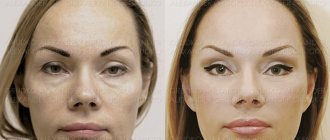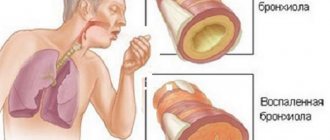Kinds
The term plastic surgery has a general meaning and under it there are many areas hidden, which can be divided into two types:
- Reconstructive surgery;
- Aesthetic surgery.
Each direction has its own characteristics, and practicing doctors solve different problems when using one or another method.
Reconstructive surgery
The very concept of reconstruction means restoration. Therefore, the name fully reflects the essence of the task of surgeons - they must reconstruct, normalize deformed tissues or organs and correct defects resulting from injuries, mutilations or congenital diseases.
In most cases, reconstructive plastic surgery is the only way to return the patient to a normal, human appearance.
The scope of reconstructive surgery is incredibly broad and this type of surgery is indicated for:
- Post-traumatic changes in the shape of certain parts of the body, organs or tissues;
- Extensive burns that require skin grafting;
- Rough and hard scars that cannot be removed in any other way;
- The presence of benign neoplasms on the skin that need to be eliminated.
According to statistics, the effectiveness of reconstructive surgery is more than 90%. That is, cases of tissue rejection or results that are unsatisfactory for patients do not occur very often.
Important! If an operation to reconstruct tissues or organs is recommended for medical reasons, then it can be performed absolutely free of charge under the compulsory medical insurance policy. Before contacting a paid clinic, consult a surgeon.
Aesthetic surgery
If reconstructive surgery helps the patient get rid of defects and return to normal, then aesthetic surgery is intended rather to exceed this norm. Here we are talking about either a radical change in appearance, or minor adjustments that are needed in order to achieve an ideal appearance. Another important difference between aesthetic surgery is that it is not mandatory and is carried out solely at the request of the client, while reconstructive intervention is most often a mandatory prescription of the attending physician, without which further treatment is impossible.
In 95% of cases, patients at aesthetic surgery clinics are women. This is not at all surprising, because who, if not the ladies, should take care of their appearance and constantly improve, trying not only to preserve, but also to increase their beauty and attractiveness. However, before going to the clinic, you should carefully weigh all the advantages and disadvantages of the operation and recalculate your finances, since you will have to pay a considerable amount for this type of surgical intervention.
Conclusion
Naturalness, natural beauty and moderation are the main trends of 2020. Getting a beautiful and neat body thanks to cosmetic interventions is not an exorbitant dream. Note that the main theme now is the face. Most of the operations performed are related to it. If you decide to correct your face, then choose a professional who can guarantee you the desired result. Decide to make changes to your appearance to show the world a new you.
- 7 unobvious habits that trigger the aging process
- 11 of 879
- A mask is not a hindrance to makeup: what do makeup artists advise?
Mammoplasty
Plastic surgery performed on the mammary glands to change their shape or size is called mammoplasty. Depending on the patient’s goal, either the skin and glandular tissues are sutured, or a special prosthesis is implanted into the chest.
With the help of mammoplasty, you can not only enlarge, but also reduce your breasts, giving them the desired shape.
Medical indications for surgery are:
- Macropathy is large breasts that complicate the patient’s life and look extremely unaesthetic.
- Breast ptosis is a drooping of the mammary glands that occurs after breastfeeding or due to other circumstances.
- Micromastia is very small breasts. Most often, this is a congenital pathology and the shape can only be changed through surgery and sewing in an implant.
Before the operation, an ultrasound is prescribed and all necessary laboratory tests of blood composition are carried out. Two weeks before plastic surgery, patients are advised to give up cigarettes, as they significantly weaken blood flow, and stop using any hormonal medications, including contraceptives. The operation can last from 2 to 4 hours.
Contraindications to mammoplasty are: any oncological and infectious diseases, the period of breastfeeding, when lactation is not yet completed and too young age (under 18 years). In all other cases, the decision about the possibility of breast enlargement or reduction is made by a plastic surgeon, guided by the patient’s health condition.
Risks and complications
The period of active recovery after plastic surgery most often takes place in the hospital. To prevent complications and the development of active inflammatory processes, a course of antibiotic treatment is usually prescribed. In addition, careful care of the operated areas of the body or skin is necessary.
The main risks are the following:
- tissues heal poorly;
- implants are rejected;
- the wound becomes infected;
- fluid accumulates under the skin;
- post-traumatic pigmentation appears;
- rough scars form;
- the sensitivity of the operated area decreases;
- asymmetry of the face or body appears;
- tissue necrosis occurs.
In most cases, problems can be resolved non-surgically, but sometimes a second operation is required.
Also, some people tolerate anesthesia very poorly, and it causes a severe allergic reaction, even stopping breathing. But this happens extremely rarely and surgeons, as a rule, are prepared for such situations and have on hand the necessary medications and equipment for quick rehabilitation of the patient.
Blepharoplasty
Eyelid surgery to change the shape of the eyes and the shape of the eyelids is called blepharoplasty.
Premature wrinkles, bags under the eyes, excess fatty tissue - all these problems can be solved with blepharoplasty.
Most often, the indication for surgery is the formation of excess fatty tissue and skin that hangs over and under the eyes, forming unsightly bags. This may be due to age-related changes or be the result of sudden weight loss. With this procedure, you can literally “open” your eyes, making your look more youthful and the skin around the eyes firm and toned.
Blepharoplasty is strictly contraindicated for:
- Oncological, infectious and hypertensive diseases.
- Diabetes mellitus. The only exception is stage 1 diabetes, in which surgeons undertake surgery.
- Flu, colds and even a slight increase in temperature.
Also, the operation is not recommended for people who have problems with the thyroid gland and during menstruation.
Liposuction
One of the most sought after and popular cosmetic surgeries to remove fat deposits. The name of the procedure has bilingual roots - English and Latin. Literally translated from Latin, “lipos” is fat, and in the English dictionary there is the word “suction”, which means “suction”. The result was a medical term that fully explains the principle of the operation.
The procedure is carried out using a special vacuum device that creates negative pressure and a tube that is inserted into the fat layer.
With the help of liposuction, you can eliminate local problems and improve individual areas of the body. The procedure can be performed on the stomach and thighs, as well as on the face, chin and arms.
As a result of the operation of this “vacuum cleaner,” adipose tissue is destroyed and instantly removed from under the skin. Experts disagree on the recommended amount of fat that can be removed in one procedure. Some surgeons believe that it is impossible to suck out more than 1-3 liters in 1 session, and in some clinics the doctor can remove up to 8 liters of fat without any dire consequences.
Typically, indications for the procedure include excess fat deposits in the hips, abdomen, back, cheeks, chin, etc. In 95% of cases, women who dream of an ideal figure and perfect body proportions resort to liposuction.
Contraindications to liposuction are:
- Thrombophlebitis or varicose veins in areas of the body that require correction;
- Oncology and hypertension;
- Obesity associated with disruptions in the endocrine system;
- Diabetes;
- Poor blood clotting.
Heart failure, gastric ulcer, and liver and kidney dysfunction also serve as negative factors when deciding to undergo surgery. As a rule, before the procedure, an extensive examination is carried out and all possible risks are identified in order to prevent the possibility of complications.
Rhinoplasty
The first mention of rhinoplasty was found in an Ayurvedic manuscript that was written in India more than a thousand years BC. The first practicing surgeons straightened the shape of the nose with the help of two polished, durable sticks, which they inserted into both nostrils.
Rhinoplasty will help eliminate defects and correct the shape of the nose.
Millennia have passed since then, and the technique of correcting the shape of the nose has undergone significant changes. Now this procedure is absolutely painless for the patient, and indications for its implementation may include:
- Deformation of the shape of the nose (hump, downturned tip, curvature of the nasal septum);
- Difficulty breathing through the nose;
- The wings of the nose are too wide;
- The patient's burning desire to make his nose perfect.
Rhinoplasty can be performed using different methods, and which one the surgeon will use depends on the complexity of the defect being corrected and the result that the patient wants to obtain.
Despite the small area of tissue that undergoes change during surgery, contraindications to the procedure still exist:
- Age. Rhinoplasty is contraindicated for patients under 18 and after 40. The only exception may be post-traumatic changes in the shape of the nose, requiring reconstructive intervention.
- Oncological diseases.
- Acne, acne, rash located at the surgical site.
- Diabetes and cardiovascular diseases.
- Poor blood clotting.
The decision about the possibility of performing an operation is made by the operating surgeon, who first studies the outpatient chart and the results of laboratory tests.
Otoplasty
Correction of defects and deformations of the ears is called otoplasty. The procedure is used to correct the shape of the ears and give them a more aesthetic shape. Accordingly, indications for surgery may include ordinary protruding ears or an unattractive shape of the ears, as well as various congenital or acquired defects as a result of injuries.
With the help of otoplasty, you can get rid of protruding ears, change the shape or completely reconstruct the ear.
At the moment, there are more than 150 methods of ear correction, and the plastic surgeon chooses the method of performing the procedure depending on the extent of the operated area and the result that needs to be achieved.
Contraindications to the procedure are standard: acute infectious diseases, oncology and diabetes, as well as poor blood clotting. The doctor may consider various ENT diseases that the patient suffered from as a negative factor, so you must take your outpatient card to an appointment with a plastic surgeon.
Plastic surgery is not limited to only the operations presented above. A patient who contacts the clinic can correct the shape of the lips, correct the oval of the face or the lines of the buttocks, and even undergo intimate plastic surgery. The only limitation is your health condition, which must be carefully checked before going under the operating knife.
Isabelle Dinoire
Despite the fact that plastic surgery in its modern sense has existed for about a hundred years, a partial face transplant was only performed on November 27, 2005. Surgeons Bernard Devauchelle and Jean-Michel Dubernard transplanted 38-year-old Isabelle Dinoire, who suffered from the teeth of her Labrador, the entire lower part of her face, from nose to chin, and the tissue donor was a woman who had died shortly before.
Bernard Devauchelle
Two years after the operation, Devauchelle and Dubernard published a report on the patient’s condition, from which it followed that Isabelle had almost completely recovered and was successfully learning to use her new face. Although the recovery took longer than expected due to the woman's immune system rejecting foreign tissue, Ms. Dinoire was so pleased with the result that plastic surgeons around the world lined up to learn the secret of her French colleagues.
By the way, the first full face transplant operation took place in 2010 in Spain - it lasted about a day, and the process was led by surgeon Juan Barrett.









